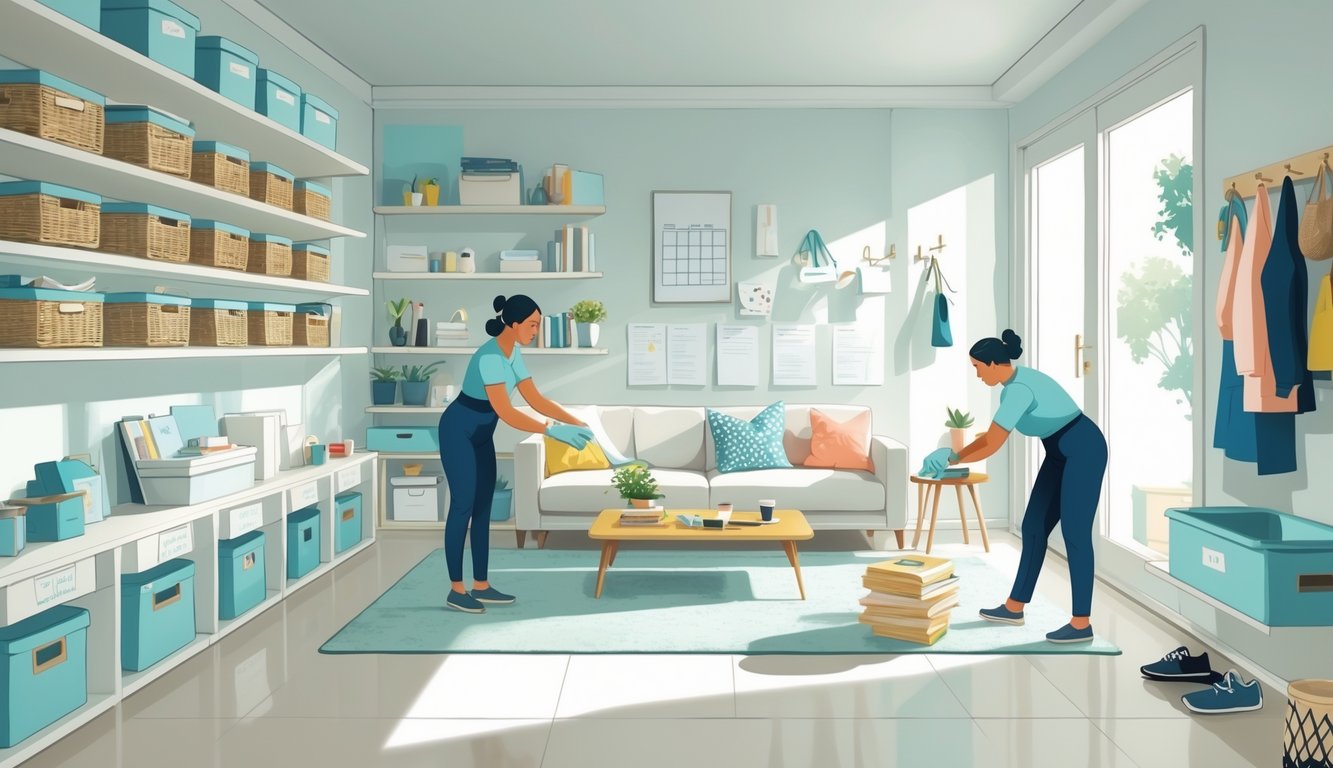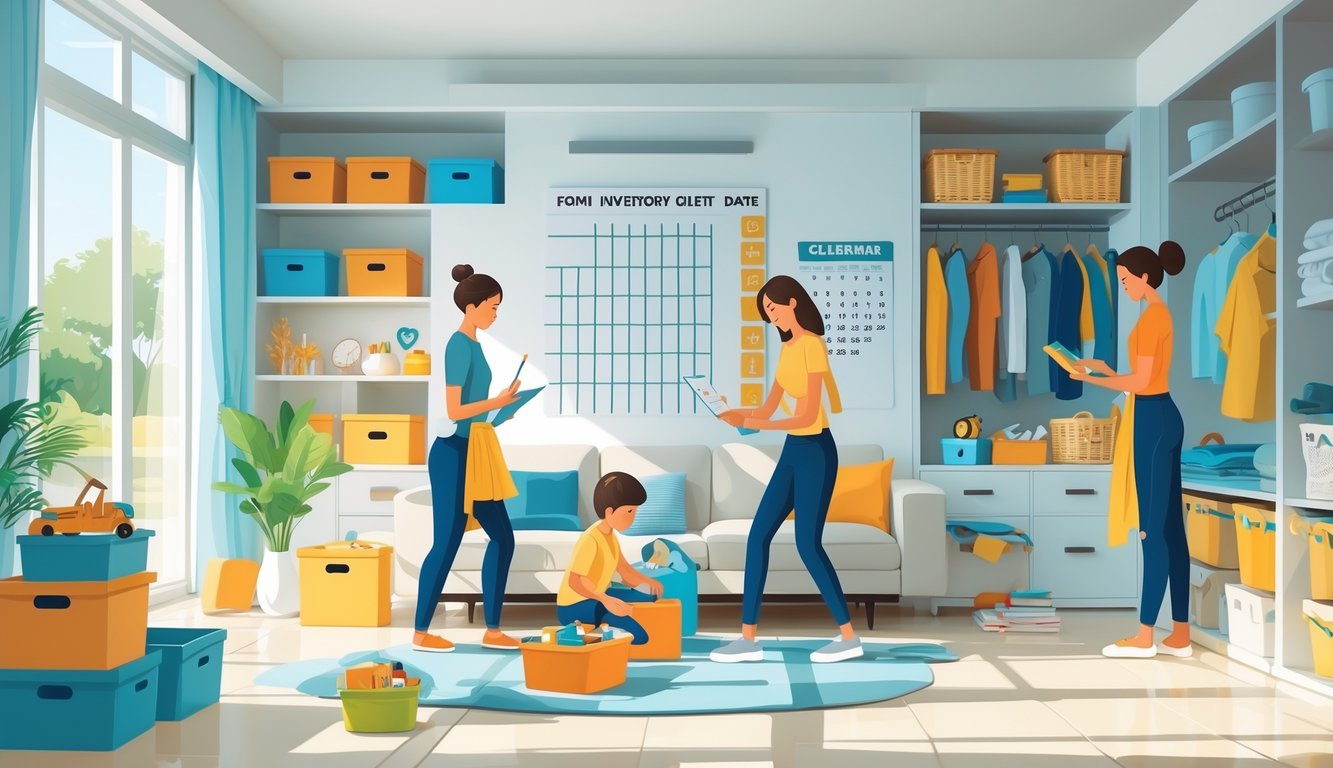
Sorting and Dealing with Junk Mail
Mail piles up no matter how many recycling bins I buy. I wish I could just open mail, toss the junk, keep the bills. But no, I drop everything near the garage, then sift through coupons and bills while balancing groceries. Once, I lost a birthday card for weeks because I saved a flyer about siding. Lesson: open mail standing up, toss junk instantly, unsubscribe from lists that just want to sell you windows. There’s even a habit tracker thing that reminds you about mail days, but I keep forgetting to use it. If you ignore junk mail, it multiplies. That’s just a fact.
I read somewhere (mailroom manager, maybe?) that 70% of mail is “pure landfill.” Didn’t check, but looking at my piano, I believe it.
Create a Designated Drop Zone
Jackets, keys, gym badges—they all want to live in my entryway forever. So I stuck a tray and some hooks in the hallway and called it a “drop zone.” Why didn’t I do this sooner? The experts love it. I saw someone use a breadbox for wallets and sunglasses. It looked messy, but kind of genius. I just use a bin and a shelf. Everything I carry lands there, not between sofa cushions. Sometimes I toss in a shopping list or a half-finished receipt, which sits until trash day or I finally sort.
Some days, the drop zone explodes. That’s when I grab a laundry basket, dump everything out, and talk to myself while sorting. Ignore clutter for a weekend, and it’s back. But at least the mess starts in one spot. Not perfect—my neighbor once left his cat’s toy there—but it’s better than nothing.
Declutter By Donation: Give It Away for Good

Why am I letting a blender or my fifth tote bag stare at me? “Maybe I’ll need it someday.” Spoiler: I never do. Someone else could use it, and if I don’t drag out the decision, stuff actually leaves and doesn’t sneak back in.
Keeping a Donation Box Handy
Half the time, I’m holding a ratty t-shirt thinking, “Do I need this for painting? Am I ever going to paint?” So now I have a cardboard box by my closet, always open. If I hesitate, it goes in. Organizers all say you need a visible donation box, not in the way, but close enough you’ll use it. I use a laundry basket under a side table. The easier it is, the less likely I am to fish things back out. (I do it anyway sometimes—nostalgia is a liar.)
I read somewhere (AARP, maybe?) that keeping a donation box keeps things moving so you don’t wait for a giant “declutter day.” Here’s their guide, if you care. Sometimes I forget what’s in there and want to rescue things, so now I tape the box shut when it’s half full.
How and Where to Donate
So many places want my family’s random leftovers. Kitchen gadgets, thrift store “finds”—I just take them straight to donation centers. Picking where to drop stuff off is sometimes harder than letting it go. Why is that?
Experts say go for places like Habitat for Humanity ReStores (great for kitchen stuff and furniture) or Goodwill for the rest. I like local shelters for linens or coats. Always call ahead—rules change, and nothing’s worse than dragging boxes back home.
One thing: stuff should be clean and working. Otherwise, it’s just landfill. Test the lamp. Wash the jacket. I wish there was a drop-off for “sentimental, technically useless” things like half-burnt candles, but there isn’t.
Scheduling Regular Drop-Offs
Boxes pile up for months because I get used to stepping over them. That’s how clutter sneaks back. I never wanted to “schedule” drop-offs, but now it’s on my calendar with groceries. No heroics, just a quick stop at Goodwill or Habitat. Filling the Jars says just go as often as you can, like grabbing coffee.
When the box fills, I toss it in the car right away. If it sits, I start rescuing things. Once it’s in the trunk, it’s gone. I should probably put a sticky note on the dash so I remember to actually stop on the way home.
Staying Ahead with Regular Inventory Checks

Honestly, I can’t pretend I’ve got it together when the junk drawer is birthing USB cables again. If I don’t get ruthless—or at least take stock of what’s hiding in my cabinets (yes, even those expired beans)—nothing’s going to change. Fancy storage boxes won’t save me.
Taking Inventory of Your Belongings
Grabbed a notepad, barely awake, and started listing everything in my kitchen. Turns out, I own way too many coffee mugs for someone who barely hosts. Why? Every organizer (The Spruce, I think?) says if you can’t name your stuff, you don’t need half of it. That’s why I tried an old home inventory checklist. Not for insurance—just to see I have three identical black tank tops, one still with tags. Oops.
I panicked and dumped it all into a spreadsheet (feels weirdly robotic, but whatever). Now I can sort by “last used” or “mystery object.” If you don’t want to buy decaf twice, log food separately.
Inventory is boring—no dopamine, just truth bombs. But it’s the only way I found that missing cake pan. (Also, don’t toss your bundt pan. That regret lingers.)
Spotting and Removing Redundant Items
Found myself surrounded by duplicate whisks and four phone chargers. Am I hoarding gadgets for guests I don’t have? The “one in, one out” rule (stolen from Homes & Gardens) is harsh but works. Get a new hoodie, ditch an old one. The emotional debate never ends, but at least there’s space.
Look for sneaky duplicates. People talk about junk mail, but I keep saving batteries that don’t fit anything. I blame Janet, my neighbor, who keeps three cheese graters “just in case.” Never seen her bake.
Forget minimalism lectures—just group duplicates in ugly shoe boxes. If the lid won’t close, something leaves. A pro once told me, “If you don’t remember buying it, you don’t need it.” More right than she knew.
So yeah, all the declutter advice boils down to this: redundancy is the enemy. My three garlic presses now live in one bin. Not perfect, but that’s life.